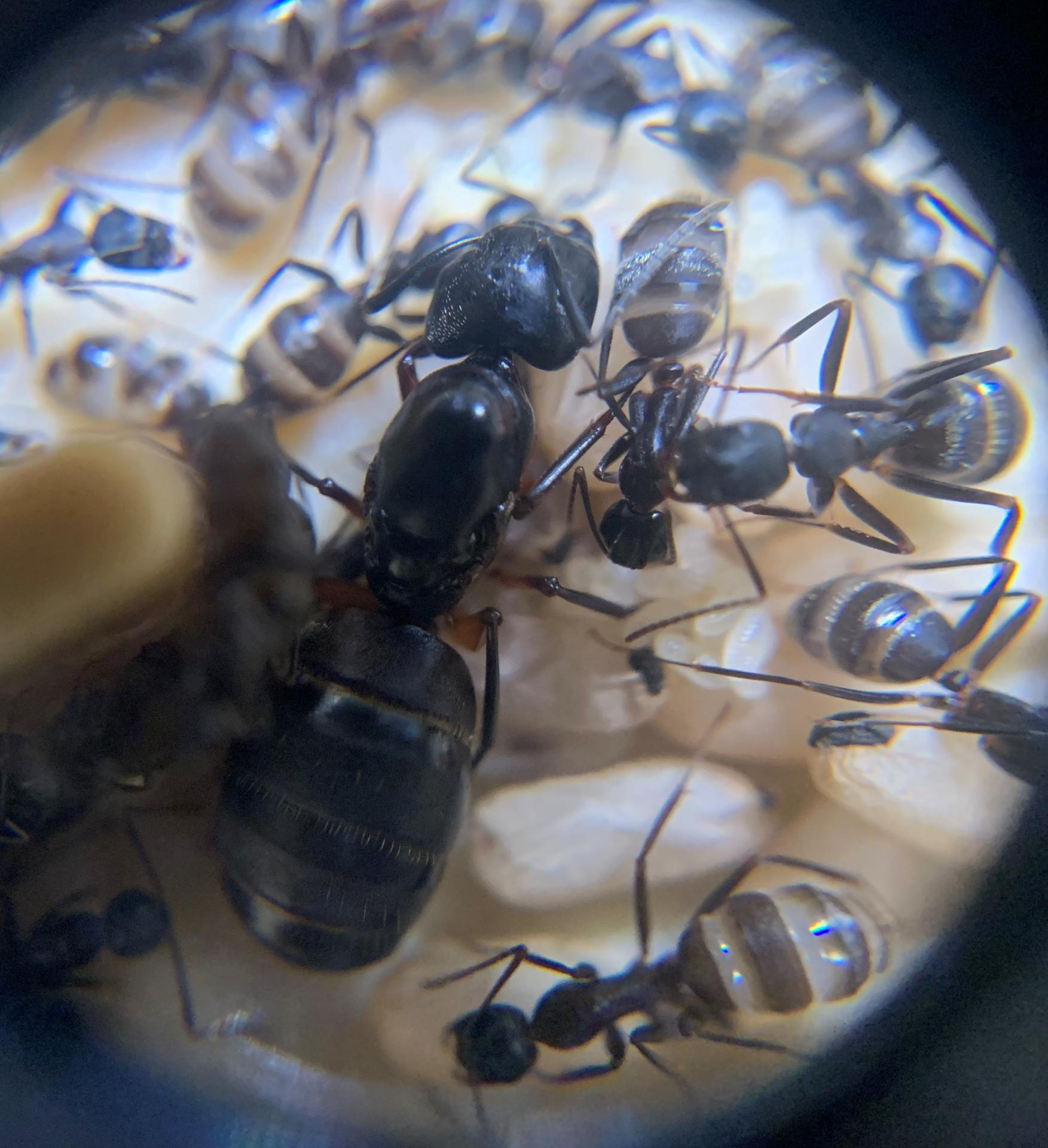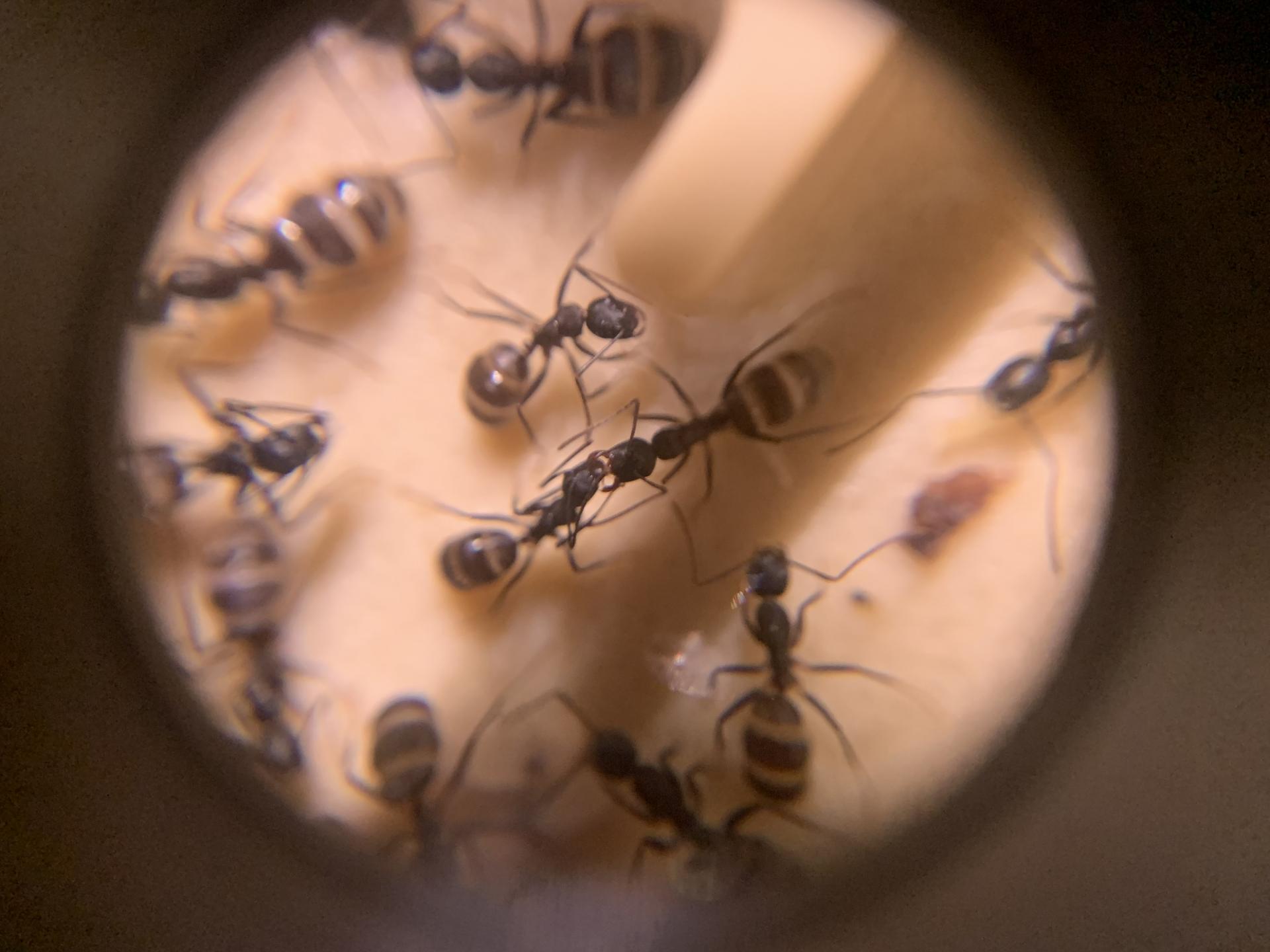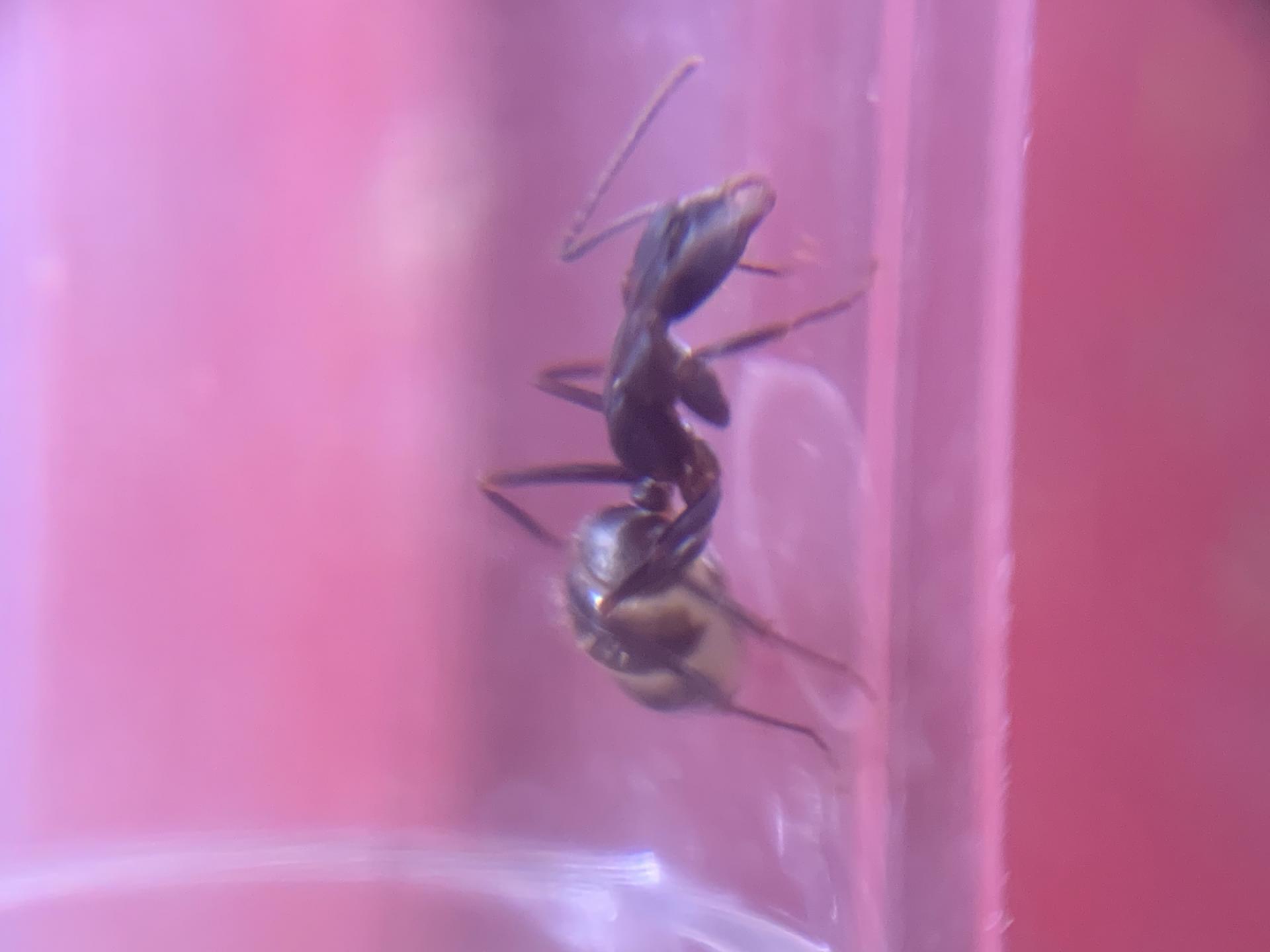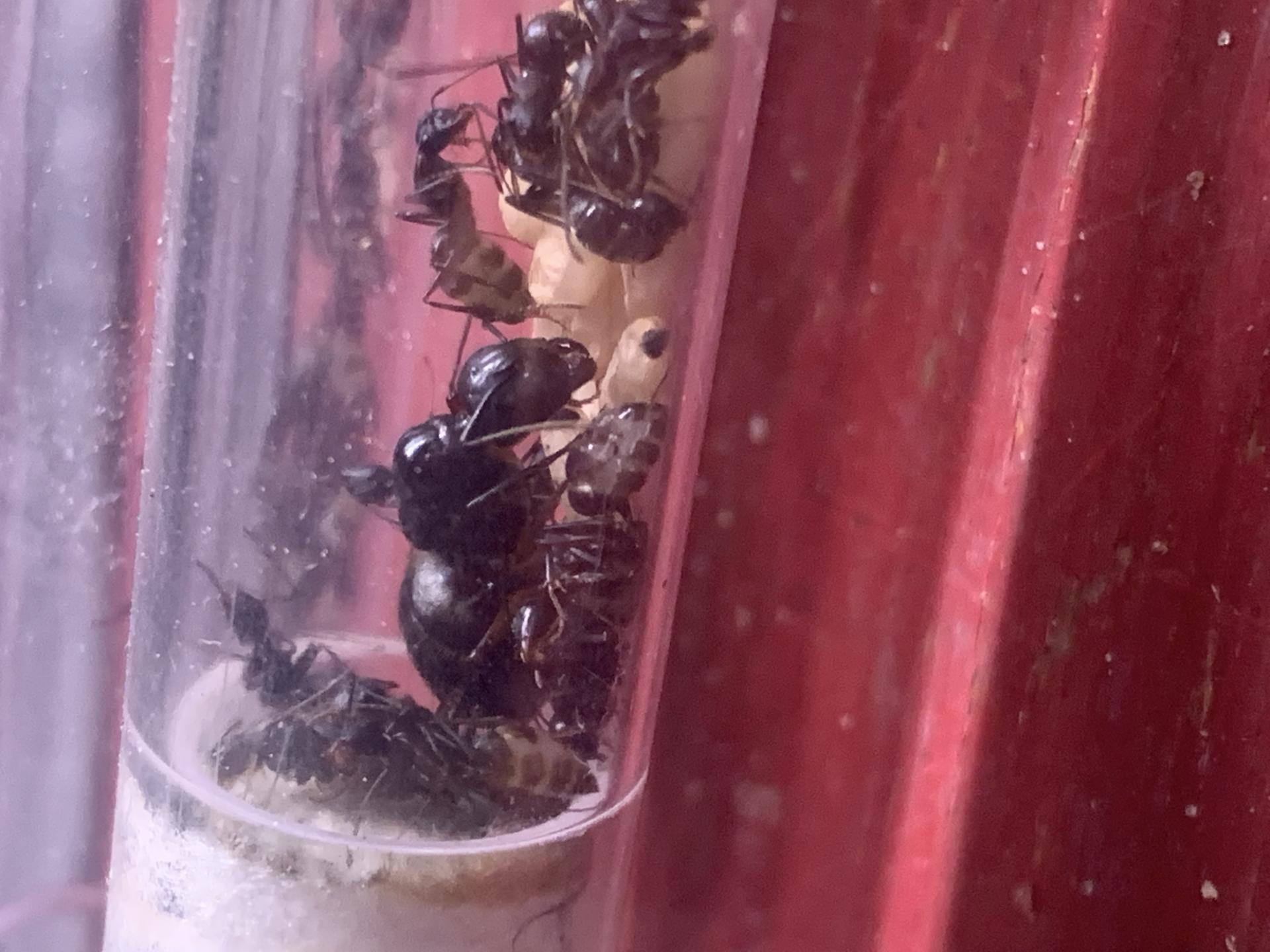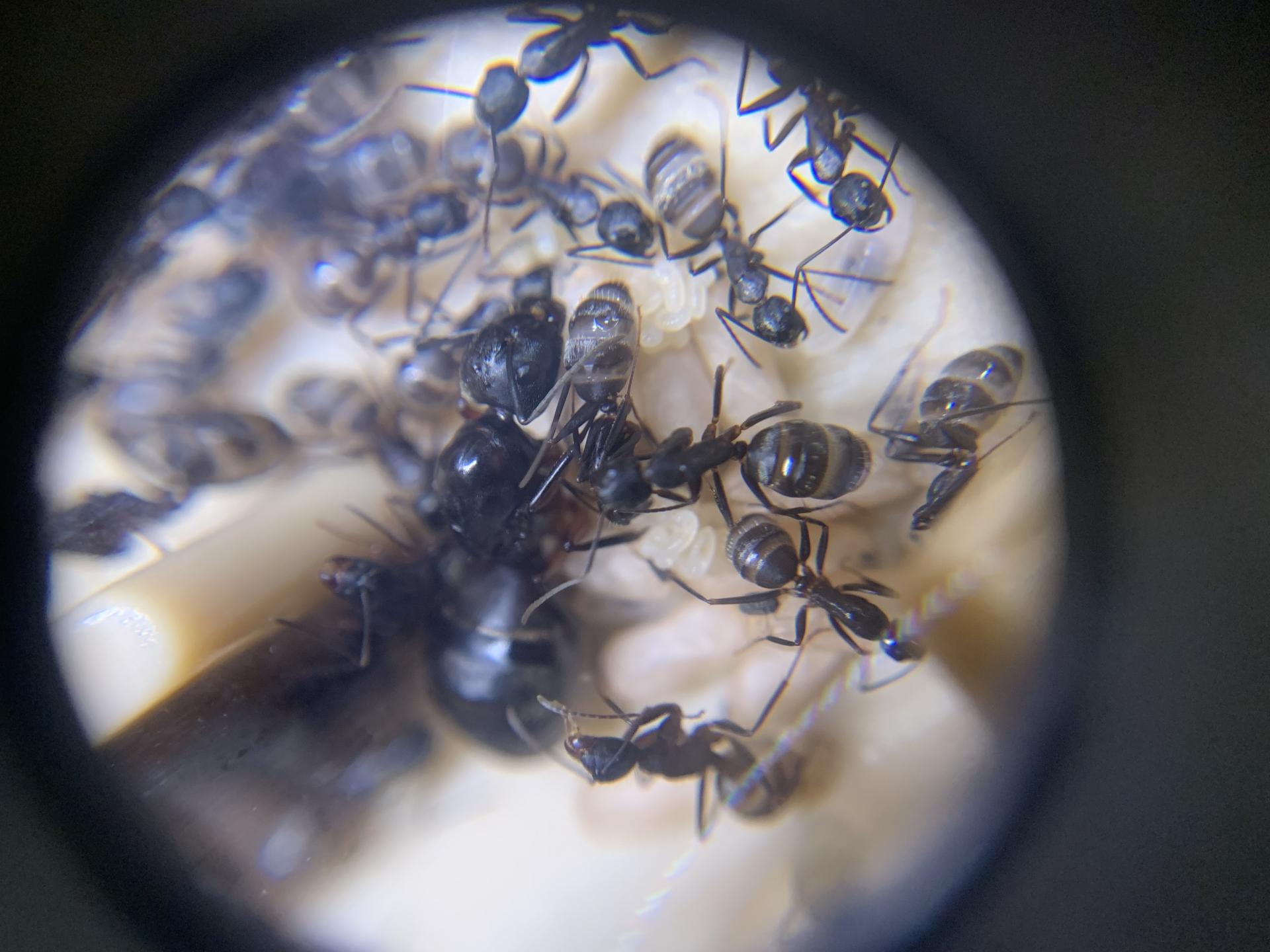1. Richmond Va, walking park in a log.
2. Last may I believe, Hard to recall exactly.
3. Suburban Richmonda Virginia walking trail around a pond. Some trees and brush but mostly office buildings.
4. I think the queen is 3/4 inch but its hard to tell when measured exactly the length. Maybe a little more or less.
5. I thought she was all black and a lock for C. pennsylvanicus. However recently I got a magnifing glass and noticed the legs are actually red. I can't tell about the under-area of the mesosoma.
6. See pictures
7. N/a).
8. Rotted log, under bark.
9. Unsure
I thought Camponotus Pennsylvanicus, and then I thought maybe Camponotus Herculeaus. But they aren't thaaat red. So maybe some kind of mix? There were a couple other regional species I considered due to coloration but thought head shape may be off.
Please let me know what you think!







